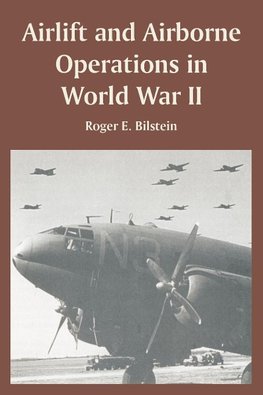
-
 Anglický jazyk
Anglický jazyk
Airlift and Airborne Operations in World War II
Autor: Roger E. Bilstein
As World War II unfolded in Europe during the late 1930s and early 1940s, U.S. military planners realized the nation's airlift and airborne combat capability was underdeveloped and out of date. The U.S. Army Air Forces relied largely on civil airline equipment... Viac o knihe
Na objednávku, dodanie 2-4 týždne
17.46 €
bežná cena: 19.40 €
O knihe
As World War II unfolded in Europe during the late 1930s and early 1940s, U.S. military planners realized the nation's airlift and airborne combat capability was underdeveloped and out of date. The U.S. Army Air Forces relied largely on civil airline equipment and personnel to launch the Air Transport Command's intercontinental routes to overseas combat zones. A separate Troop Carrier Command and newly formed airborne divisions hammered out doctrinal concepts and tactical requirements for paratroop engagements. Despite operational shortcomings, subsequent airborne assaults in North Africa and Italy generated a base of knowledge from which to plan such massive aerial formations and paratroop drops as those for the Normandy invasion and Operation MARKET-GARDEN, and strategic efforts in the China-Burma-India theater. Airlift routes over the Himalayas demonstrated one of the war's most effective uses of air transport. The Air Transport Command emerged as a remarkably successful organization with thousands of aircraft and a global network of communications centers, weather forecasting offices, airfields, and maintenance depots, and air-age realities influenced a postwar generation of dedicated military air transports operating around the world.
- Vydavateľstvo: University Press of the Pacific
- Rok vydania: 2005
- Formát: Paperback
- Rozmer: 229 x 152 mm
- Jazyk: Anglický jazyk
- ISBN: 9781410220141






 Ruský jazyk
Ruský jazyk 





